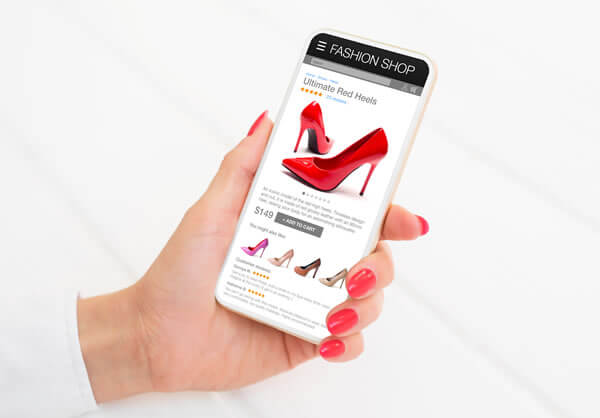- History and Evolution of Web Design
- Key Stages of Evolution of Web Design
- Text-Only Websites (1990s)
- HTML Tables and Frames (Late 1990s)
- Introduction of CSS (Late 1990s – Early 2000s)
- Flash Era (Late 1990s – Early 2000s)
- Web 2.0 and Responsive Design (Mid-2000s)
- HTML5 and CSS3 (Late 2000s – Early 2010s)
- Mobile-First Design (2010s)
- Flat Design and Material Design (2010s – Present)
- Parallax Scrolling and Single-Page Websites (2010s – Present)
- Web Performance and Page Speed (2010s – Present)
- Web Accessibility (2010s – Present)
- Grid Layouts and CSS Grid (2010s – Present)
- Dark Mode and Minimalism (2010s – Present)
- Web 3.0 and Emerging Technologies (2020s – Present)
Welcome to our blog post on the fascinating history and evolution of web design. In this article we will travel back in time to learn how web design has evolved significantly since the early days of the World Wide Web. So, let’s embark on this journey together.
History and Evolution of Web Design
In today’s digital marketing age every business that wants to succeed needs a website. Web design will likely continue to evolve in response to technological advancements, user preferences, and changing design trends.
Key Stages of Evolution of Web Design
Text-Only Websites (1990s)
In the 1990’s the websites were simple and focused on delivering content. The websites had basic text-only pages. Tim Berners-Lee’s original website is a good example of this era. The World Wide Web Project was discussed on the first webpage. British computer scientist Tim Berners-Lee developed it at the European Organization for Nuclear Research, or CERN, where it was first used.
Today: Incorporating multimedia elements can engage users, convey a message effectively, and meet modern web design expectations. The branding and overall design of a website are frequently strengthened by the addition of multimedia components. Text-only websites might not have the same aesthetic appeal and visual identity as multimedia-rich websites.
HTML Tables and Frames (Late 1990s)
The popularity of HTML tables and frames increased as web technology developed. Layout was done using tables, which resulted in some visually cluttered and ineffective designs.
Today: Search engines prefer clean, semantic HTML structures. Frames and tables can complicate the structure of your web page, making it harder for search engines to crawl and index your content. This can negatively impact your site’s search engine rankings. Moreover, frames and tables can create accessibility issues for users with disabilities. Screen readers and other assistive technologies may have difficulty navigating and interpreting content presented within frames and tables. This can result in a poor user experience for individuals who rely on these tools.
Introduction of CSS (Late 1990s – Early 2000s)
The development of Cascading Style Sheets (CSS) allowed designers to separate content from presentation. This led to cleaner code and more control over the layout and design of websites.
Today: CSS enables the consistent styling of multiple web pages within a site or across an entire website. You can define styles in one central CSS file and apply them. CSS is essential for creating responsive web designs that adapt to different screen sizes and devices. Media queries, a CSS feature, allow developers to apply different styles based on the user’s screen size, ensuring a seamless user experience on desktops, tablets, and smartphones.
Flash Era (Late 1990s – Early 2000s)
Macromedia Flash was widely used for creating interactive and multimedia-rich websites. However, Flash websites had issues with accessibility and Search engines could not read the content of the website.
Today: Adobe Flash was once a popular technology for creating interactive and multimedia-rich web content, including animations, games, and interactive websites. However, Flash has largely fallen out of favor for website design due to several significant drawbacks and industry shifts.
Flash was known for its numerous security vulnerabilities. It became a common target for hackers and malicious actors, leading to frequent security updates and concerns for both users and web developers. Moreover, Flash content was not supported on all devices and browsers. As the mobile web gained prominence, Flash became virtually nonexistent on smartphones and tablets, limiting its reach.
Web 2.0 and Responsive Design (Mid-2000s)
The term “Web 2.0” shifted towards more dynamic and interactive websites. Users were starting to use mobile devices to access internet. This era also saw the emergence of responsive web design, which aimed to make websites adapt to different screen sizes and devices.
Today: Responsive web design is a fundamental approach in modern web development that addresses the diverse landscape of devices and screen sizes used to access websites today.
Responsive web design offers several benefits, including:
- Improved User Experience: Users can access a site on any device, leading to a more consistent and user-friendly experience.
- Better SEO: Google and other search engines favor mobile-friendly websites in search results, so responsive design can improve search rankings.
- Cost Efficiency: Maintaining a single responsive website is often more cost-effective than creating separate websites or apps for different devices.
- Future-Proofing: As new devices with varying screen sizes and resolutions emerge, responsive design can adapt to them without requiring a complete redesign.
HTML5 and CSS3 (Late 2000s – Early 2010s)
New features and abilities like video and audio components, rounded corners, gradients, and animations were introduced by HTML5 and CSS3. This made it possible to create designs with greater features and aesthetic appeal.
Today: HTML5 remains a foundational technology for web development and is widely used to create modern, feature-rich, and interactive websites and web applications. It has become the industry standard for building web content and has largely replaced older versions of HTML, such as HTML 4.01 and XHTML 1.0.
Mobile-First Design (2010s)
With the rise of smartphones and tablets, mobile-friendly design became more important to web designers. The concepts of “mobile-first design” pushed developers to build websites that are optimized for mobile devices first, then scale them up for larger screens.
Today: Mobile-first approach doesn’t mean ignoring desktop users; it means starting with mobile as the primary consideration and then progressively enhancing the design for larger screens. This approach is especially relevant today, given the increasing use of mobile devices to access the internet.
Benefits of the mobile-first approach include:
- Improved User Experience: By focusing on mobile users’ needs and constraints, websites and apps are more likely to provide a better experience on all devices.
- Faster Loading Times: Prioritizing performance and minimizing unnecessary assets leads to faster loading times, which are crucial for mobile users.
- Broad Compatibility: A mobile-first approach ensures compatibility with a wide range of devices, including older smartphones with smaller screens and less processing power.
- SEO Benefits: Search engines like Google favor mobile-friendly websites in search results, potentially improving a site’s search engine rankings.
- Cost Efficiency: Designing for mobile first often results in more efficient web development process and can be cost-effective compared to retrofitting a desktop-focused design for mobile devices.
Mobile-first design also considers accessibility from the start, ensuring that the design and content are usable by people with disabilities on mobile devices.
Flat Design and Material Design (2010s – Present)
With the introduction of Windows 8 and iOS 7, flat design characterized by simple lines and minimalistic aesthetics became popular. Using depth and realism as its focal points, Google’s Material Design established a new design language.
Today: Material Design was introduced by Google in 2014 and has been widely adopted by Android app developers, web designers, and other digital product creators. It provides a visually appealing and consistent design language for Google’s ecosystem.
Both flat design and Material Design are still used today, but their application depends on the project’s goals, target audience, and the design team’s preferences. Some projects may lean toward flat design for its simplicity and clarity, while others may choose Material Design for its engaging and interactive nature. Designers often mix and match elements from these design philosophies to create unique and effective user interfaces.
Parallax Scrolling and Single-Page Websites (2010s – Present)
Parallax scrolling effects and single-page websites became trendy, offering engaging user experiences.
Today: Parallax Scrolling and Single-Page Websites are two web design techniques that were popular in the past and are still used today, although their prevalence and applications have evolved over time.
Parallax scrolling is still used in web design, especially for certain types of websites such as portfolios, product showcases, and promotional landing pages. However, it’s often used more subtly and sparingly than in its heyday. Overuse of parallax scrolling can lead to a distracting user experience, so designers typically apply it judiciously for specific visual effects.
Single-page websites, as the name suggests, consist of a single HTML page that contains all the content of a website. Navigation is usually achieved through scrolling or clicking on links that smoothly scroll to different sections of the page, creating a seamless user experience.
Single-page websites are still used today, but their use cases have evolved. They are often employed for simpler websites or as landing pages for products, events, or portfolios. They can provide a clean and straightforward user experience, especially for mobile devices. However, for larger and more complex websites, multi-page structures with separate sections for different content may be preferred for better organization and SEO.
Both parallax scrolling and single-page websites have their pros and cons, and their effectiveness depends on the specific goals and content of a website. When used thoughtfully and in moderation, they can enhance the user experience and make a website more engaging. However, it’s essential to consider the target audience, the type of content, and the overall design objectives when deciding whether to incorporate these techniques into a website.
Web Performance and Page Speed (2010s – Present)
The importance of web performance and page speed optimization has grown significantly. Faster-loading websites are prioritized for better user experiences and SEO.
Today: Web performance and speed are crucial for providing a better user experience, improving search engine rankings, increasing conversion rates, retaining users, and maintaining a positive brand image. In today’s digital landscape, where users have high expectations for fast and responsive websites, optimizing web performance is a fundamental aspect of online success.
Web Accessibility (2010s – Present)
Accessibility standards have become more important, ensuring that websites are usable by people with disabilities. Designers are incorporating accessibility features into their designs.
Today: This can be achieved by providing descriptive alt text for all images. Alt text should convey the purpose or content of an image, especially for images that convey information. Ensure that all functionality on your website can be operated with a keyboard alone. Users with mobility issues may rely on keyboard navigation. Use legible fonts, appropriate font sizes, and good color contrast. Ensure that text remains readable when resized or viewed in high contrast mode. Use Aria-labels. Accessibility is an ongoing process. Regularly review and update your website to ensure it remains accessible as content and technology change.
Grid Layouts and CSS Grid (2010s – Present)
CSS Grid Layout has revolutionized web design by providing powerful tools for creating complex layouts with ease.
Today: Grid layouts and CSS Grid (also known as CSS Grid Layout or just Grid) are techniques used in web development and CSS (Cascading Style Sheets) to create flexible and responsive layouts for web pages. They allow web designers and developers to arrange elements in a two-dimensional grid, making it easier to control the placement and alignment of content within a web page or a specific container.
Grids are defined by rows and columns. You specify the number of rows and columns, their sizes, and the gaps (gutters) between them using CSS properties.
Dark Mode and Minimalism (2010s – Present)
Dark mode has become a popular feature, and minimalist design continues to influence many websites, offering cleaner and more focused interfaces.
Today: Dark Mode is a design trend that focuses on using a dark color scheme, typically featuring dark backgrounds with light-colored text and elements. It is often associated with a modern and visually appealing aesthetic.
Minimalism is a design philosophy that emphasizes simplicity and the removal of unnecessary elements. It is characterized by clean lines, ample white space, and a focus on essential content.
Web 3.0 and Emerging Technologies (2020s – Present)
As technology evolves, web design continues to adapt. The integration of AI, VR, AR, and other emerging technologies is shaping the future of web design.
Fact: Web design will likely continue to evolve in response to technological advancements, user preferences, and changing design trends. The evolution of web design reflects both the capabilities of web technologies and the evolving needs and expectations of internet users.


NetQwik is a web design and SEO company headquartered in Ashburn, Virginia. We are a one stop web solutions company and operate out of our offices in Ashburn, Fairfax, Richmond, Spotsylvania, Norfolk, Northern Virginia.
We have been rated as one of the best SEO agencies in Northern Virginia. Our services include web design, e-Commerce websites, local SEO, search engine optimization, social media marketing, content marketing, digital marketing, domain names and hosting, we provide it all.
If you are looking for a Northern Virginia SEO and web design company to launch your next project, give us call at 800-657-5432 or fill out our contact form for a free consultation.



